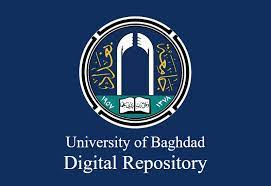The Healthy Diet and Its Relationship to Reducing the Pain of Premenstrual Syndrome (PMS) in Adolescent
Keywords:
Pre-Menstruation, TeenagersAbstract
The current research includes five chapters. The first chapter presents the introduction and the importance of the research. The menstrual cycle is a monthly reminder of fertility in women; however, it also has some unwanted side effects. Many women experience physical pain or even depression, and these effects are often hidden. There are several natural ways to reduce the pain of premenstrual syndrome (PMS), which is related to the fluctuating hormone levels throughout the menstrual cycle. Severe cases of PMS can interfere with a woman's life and work, making it difficult for her to perform her duties during the days leading up to menstruation, after which the symptoms usually subside with the start of the next menstrual cycle. Some women may benefit from general health advice, such as following a balanced diet and engaging in regular exercise to reduce the intensity of the pain. Taking vitamins or using some alternative medicine approaches may also help alleviate the symptoms of PMS. It is important to correct the diet during the week or two prior to menstruation, and it is better to maintain a balanced, healthy diet consistently, as this is essential for overall health, particularly for adolescents. Thus, the importance of this research lies in studying the dietary system and health practices and their impact on reducing PMS pain.
The problem of the research lies in the suffering of adolescents from severe PMS symptoms every month, which can start 5 to 14 days before menstruation, leading to a decrease in their activity levels during work. As a result, they often seek medical treatment to alleviate the pain. Since a balanced diet and healthy practices play a significant role in alleviating these symptoms by influencing neurological and hormonal disturbances, this research aims to study the role of a healthy dietary system in reducing PMS pain.
References
Badwilan, Salah Salem: Honey, A Cure for Every Disease, 1st edition, Al-Saeed Library, Riyadh, Saudi Arabia, 2000.
Barham, Zaghloul Sadeq: Nutritional Value of Plants, 1st edition, Dar Al-Ilm, Sharjah, UAE, 2000.
Bishara, Natalia: Encyclopedia of Women's Herbal Healing, 1st edition, Al-Ahliyah, Amman, Jordan, 2004.
Al-Husseini, Ayman: Strengthening Foods and Essential Vitamins for the Modern Woman, Dar Al-Tala'a, Cairo, Egypt, 1998.
Al-Husseini, Ayman: Encyclopedia of Folk Medicine and Alternative Treatment, Dar Al-Tala'a, Cairo, Egypt, 2004.
Salama, Dr. Mona: Link to website (No further publication info available).
Al-Sayed, Abdel-Baset Mohamed and Hussein, Abdel-Tawab Abdullah: The Comprehensive Mother’s Encyclopedia of Herbal and Medicinal Plants, 1st edition, Al-Dar Al-Alamiya, Alexandria, Egypt, 2004.
Al-Sayed, Abdel-Baset Mohamed: Green Medicine, 1st edition, Al-Ighras Publishing and Distribution, Giza, Egypt, 2006.
Sha'sha', Hafiz: Herbs Healed by the Prophet (PBUH), 1st edition, Dar Al-Ghad Al-Jadeed, Mansoura, Egypt, 2005.
Abdul-Qader, Mona Khalil: Nutritional Status Assessment, 1st edition, Nile Group for Publishing, Cairo, Egypt, 2001.
Abdul-Aziz, Mohamed Kamal: Hormones and Their Role in Our Lives, Ibn Sina Publishing, Cairo, Egypt, 2002.
Al-Aid, Sobhi Shehata: Encyclopedia of Healing Plants and Nutritional Supplements, 1st edition, Dar Al-Kindi, Jordan, 2003.
Al-Madani, Khaled: Nutrition for Schoolchildren and Adolescents, Food and Nutrition Medical University Book, World Health Organization, Academia International, Beirut, Lebanon, 2002.
Al-Madani, Khaled bin Ali: Nutrition Throughout Life Stages, 1st edition, Dar Al-Madani, Jeddah, Saudi Arabia, 2005.
Al-Masri, Nadeem: Sports and Nutrition Before the Doctor and Medicine, 1st edition, Dar Al-Fikr, Damascus, Syria, 2001.
Nawar, Isis Azar: Food and Nutrition, Dar Al-Ma'rifa Al-Jami'iya, Alexandria, Egypt, 2004.
Muneyvirci, D.O., Nacharaju, V.L., Altura, B.M. and Altura, B.T. (1998): Sex Steroid Hormones Modulate Serum Ionized Magnesium and Calcium Levels Throughout the Menstrual Cycle in Women, Fertility and Sterility, 69(5): 958-962.
Shamberger, R.J. (2003): Calcium, Magnesium and Other Elements in the Red Blood Cells and Hair of Normals and Patients with Premenstrual Syndrome, Biological Trace Element Research, 94(2): 9-123.
Downloads
Published
Issue
Section
License
Copyright (c) 2019 Modern Sport

This work is licensed under a Creative Commons Attribution 4.0 International License.















